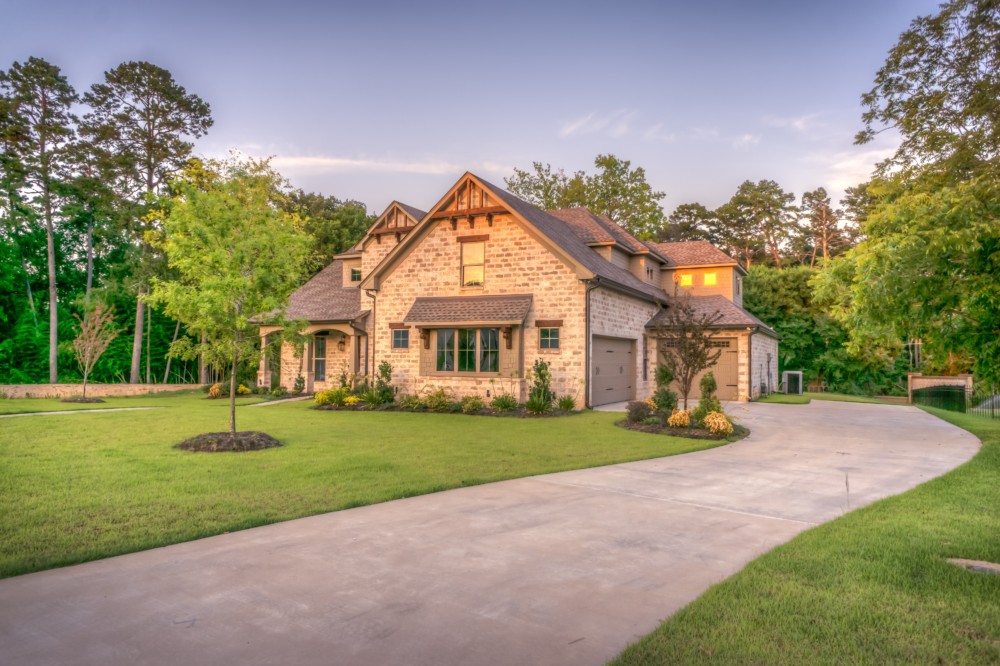On the Move
Low home inventory and high demand are expected to persist in 2021 real estate market
Baking bread, mastering TikTok dances and adopting pets have all been popular pandemic pastimes, but home buying may be one of the most popular yet. With mortgage rates at historic lows, and home values at record highs, many buyers are finding they can lower their monthly mortgage or upsize to a larger home for less money, more comfortably.
“Record-low rates have encouraged people to upsize or downsize sooner than they would have,” says Tim Hoff, chief lending officer with Community First Credit Union.
Oshkosh resident Katelyn Olds and her husband, Tyler, sold their home in October 2020 and moved into their new home the following month. Olds says the current market conditions greatly influenced the couple’s decision to enter the market when they did.
“The low interest rates and higher home values made a big difference for us to be able to get a more expensive home because we made a lot of money on the sale of our old house,” she says. “We took the money we made on the sale and paid off the PMI (private mortgage insurance) on the new house.”
In November 2020, existing home sales were up more than 15 percent from the previous year, according to the Wisconsin REALTORS Association. What’s happening on the state level is also being seen locally, says Michael Sewell, president of the REALTORS Association of Northeast Wisconsin and chief compliance officer with Coldwell Banker Real Estate Group.
“What’s going on right now is a very unusual situation in that we have high demand and low inventory,” Sewell says. “If you look at the fundamental aspects of economics, you know that is going to drive prices up. The good news is that interest rates continue to drift downward and we have seen interest rates below three percent.”
Chad Miller, vice president of retail banking for Nicolet Bank and president of the Winnegamie Home Builders Association, says mortgage rates are the lowest he has seen in 18 years on the job.
“Rates are ridiculously low, so people can afford a bigger house. They are below three percent right now with a great credit score,” he says. “I can comfortably say I don’t see them changing in the next 12 months.”
Even with rising home values, homes remain affordable especially in Northeast Wisconsin where the median home price sits around $190,000, Sewell says. In comparison, the national median price was $317,000 in October.
Low home inventory was a challenge before the pandemic and that continues to be the case. Six months of housing supply is considered a balanced market that favors neither buyer nor seller. Currently in Wisconsin, there is about a two month supply which indicates a decisive seller’s market.
“It’s not like we are down a little bit. We are down a lot,” Sewell says. “We are like 25 percent less inventory from last year.”
Some of the low inventory is still fallout from the 2008 recession which put strain on the home building industry. It has taken time for home builders to find their footing after the recession and the demand for homes has outpaced new construction. In addition, economic uncertainty due to the pandemic has caused some would-be home sellers to hunker down where they are in fear of job loss or reduced income.
This all attributes to the lack of existing homes for sale, which can make the process frustrating for buyers, says Lindsey Kate, owner of Acre Realty in Appleton, especially those in the market for homes under $200,000.
“The biggest buying segment is between $200,000 and $300,000, and houses under $300,000 have drastically gone up in price,” Kate says. “For some of my clients under the $200,000 range, we might write 10 offers before they get one accepted. It makes it really hard for first time buyers in that price range.”
In one extreme case Sewell witnessed, a home received 15 offers after four days on the market.
“It creates a lot of problems explaining offers to sellers and figuring out what’s the best offer for them,” Sewell says. “Sellers are starting to look more and more at not necessarily the highest offer price, but those that have the fewest contingencies.”
For example, a cash offer might be more attractive than one contingent on financing. Some buyers, like the Oldses, decide against making their offer contingent on the sale of their current home. And other buyers are even waiving the inspection contingency to make their offer more attractive to the seller, who may see a home inspection as one more hurdle to cross in order to get to closing.
In a fast-moving market like the current one, the hurdles can be many. The high demand for homes has put a strain on the entire real estate ecosystem.
“There’s a backup with everybody – with loan applications, with appraisals,” Miller says. “Title companies are just crazy. Trying to get closing done in 45 days is really tough right now. Anything less than that is an exception.”
Home appraisals, which will determine how much a mortgage lender will borrow to a buyer, have been problematic.
“Because of the significant increase in volume, appraisals are taking longer,” Hoff says. “It is taking up to six weeks for an appraisal to come back, which can increase the length of time for the approval process.”
In 2021, Kate recommends home buyers and sellers settle in for the long haul. She suggests preparing as much as possible ahead of time by completing a pre-approval if you’re looking to buy or a pre-inspection if you’re looking to sell. Buyers should save as much money as possible to account for unexpected expenses. Preparing your finances and home prior to making an offer or listing on the market will help make the process as seamless as possible.
“All signs point to this is going to be the norm for a while, so people need to be patient,” Kate says. “In this market, you might write five to 10 offers, but don’t let it get you down.”
Developments in new housing construction seem to be on the rise. Miller is encouraged by 2020 third quarter data from the Wisconsin Builders Association which indicates that new home permits increased by 22 percent. Despite significant pandemic-related construction delays and supply shortages, the year-to-date numbers show a strong 13 percent increase in single-housing permits from January through September of 2020.
Sewell anticipates some stability in inventory this year. As long as current levels are maintained without further reductions, home prices may rise slightly, but not as dramatically as last year.
“It’s still going to be a seller’s market, but it’s going to be solid overall,” he says.
2021 Fox Cities Winter Parade of Homes
February 6-7 & 11-14
11 a.m.-5 p.m., Saturday and Sunday & 5-8 p.m., Thursday and Friday
The Fox Cities Parade of Homes is a self-guided tour of newly constructed and remodeled homes built by members of the Home Builders Association of the Fox Cities. Details about the homes on the tour can be found at foxcitiesparadeofhomes.com, on the Parade of Homes mobile app and in the printed guidebook provided with ticket purchase.
To help keep yourself and others safe while attending the parade, please do not attend if you are presenting any symptoms of COVID-19 or have been diagnosed with COVID-19. Face masks or coverings are required to be worn in all homes and guests are asked to remove shoes in lieu of disposable foot coverings.
Tickets go on sale February 1. For more information and to purchase tickets, visit foxcitiesparadeofhomes.com.













Leave a Comment